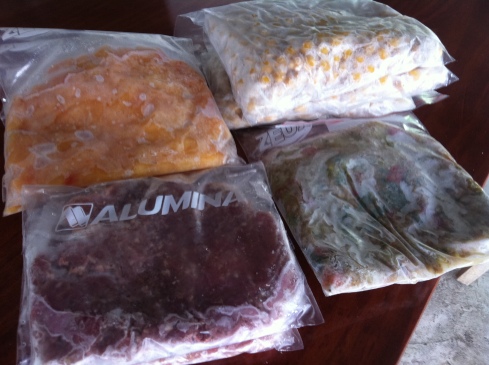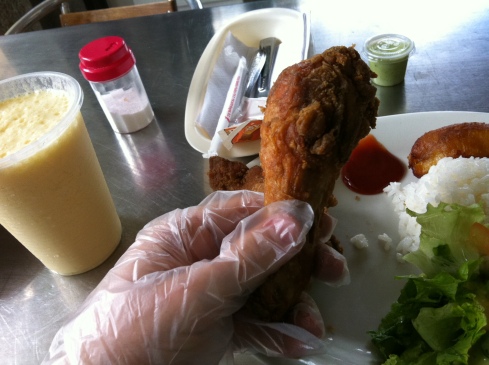
A body like this doesn’t come easy (nor does her phone number) but with the right strategy, it is possible!
How many times have you started out on a new diet with the greatest of intentions of getting healthier and losing weight only for everything to fall apart faster than you can say “white chocolate and raspberry cheescake”?

I probably shouldn’t be showing such a tempting picture in this post but my God this is a thing of beauty.
Many of you who have tried dieting before know just how easy it is to “fall off the wagon” and how one little mishap can ultimately destroy whatever progress you’ve already made on a diet.
Falling off the wagon is not necessarily just one little isolated incident where you just dust yourself off and hop back on (although we’ll talk about how to do that a little later). On the contrary, “one little incident” can often be enough to set off a snowball effect of “compensation eating” (trying to compensate for all the things you’ve been avoiding on a diet by eating as much of them as possible) that ends up with you feeling awful both physically and emotionally and hating yourself and your self-destructive behavior. Believe me, I’m talking from experience.
Why fight it?
I really believe that in order for us to be happy we have to “take control of the controllable variables” in our lives. What I mean by “controllable variables” are the things that we can change ourselves; exercise, the people we spend time with, our food, use of our free time etc. Taking control of your food and exercise habits is a fundamental step towards a healthier and happier you.
In my case, I used to be chubby but I decided to change that when I was 15 years old. I took control of what I ate and started exercising and while it was never easy I have learned many things over the years that can really help you to stick to your dieting guns.
I’ve also learned that when it comes to losing weight, your diet is much more important than your exercise habits (losing weight is maybe 80% diet and 20% exercise). What I mean is that you can exercise all you want but if you’re not taking care of your diet you’re gonna find it very difficult to strip off excess body fat.
Bullet-Proof your Diet
While actually deciding to start eating more healthily is a hugely important step, it’s not going to do anything for you if you mess up at your first hunger-pang, craving for sweets or the scent of a bakery.
Willpower is an exhaustible resource so you can’t rely on it to keep you on track. Instead, I’ve compiled a list of tips that I have found to be crucial in sticking to ANY eating plan by making it harder to mess-up. Follow these tips and Bullet Proof your diet making it nearly “impossible for you to fail”. You don’t have to use all these tips but the more you incorporate into your daily life the greater their cumulative effect.
The Tips
Get enough quality sleep
You’re probably thinking “what on earth could sleep have to do with sticking to my diet?”. Surprisingly it plays a fundamentally important role. Not getting enough quality sleep can have a whole host of negative effects on your body and one of those is it’s effect on appetite and control of cravings. That’s right, not getting sufficient sleep not only makes you cranky but it also makes you more prone to give in to cravings and even binge on undesirable food. This is something I noticed years ago and I have often “slipped up” with my food choices due a lack of sleep the night before.
Make getting a good nights sleep a priority. If you need more impetus to do so just remember that we need sufficient sleep to secrete growth hormone which not only increases muscle mass and reduces body-fat but also keeps you looking younger (I totally understand if these effects sound repulsive to you 😉 ). Make yourself go to bed at an appropriate time (7-8 hours before you plan to wake up) and sleep in a quiet, dark room (or use ear-buds and an eye mask like I do). Just make sure you get enough sleep and you can expect to see a big drop in your food cravings.
Prepare your food in advance
Following a particular diet often means you have to prepare your own food and this is where a lot of people often falter. How many times have you been on your way home from work and decided to pick up a less than healthy take-away meal on the way instead of preparing something that you know is healthy when you get home?
The problem many people find with cooking is that it’s time consuming and it can get monotonous if you have to prepare the same thing every day. Add to that the clean-up afterward and the fact that you might not always have the ingredients you need in the house and it’s no wonder most people just grab a sandwich and a chocolate bar (or 3) at the local supermarket.
However if you’re Super-OCD like myself, there is a way around this. I prepare the vast majority of my food in advance, in bulk and then I apportion it and freeze it, ready for whenever I need it.
If you look in my freezer you’ll find a selection of different Ziploc bags filled with different colored foods. I have portions of cooked meat and vegetables, cooked and seasoned beans and lentils, cooked vegetables in different sauces and even portions of raw meats for quick cooking. Everything is flattened out in the Ziploc bag to make it easy to store/stack in the freezer and it makes defrost/cooking them a whole lot faster too.

Just a little selection of the “ready-to-go” foods I keep in my freezer.
Clockwise from top-right: cooked chickpeas, cooked lentil and vegetable stew, raw minced beef and raw cubed chicken. I know how much of everything (cals, fat, protein, carbs) is in each Ziploc bag.
The great thing about this is, because I’ve cooked these myself, I know exactly how many how many calories and how much fat, protein and carbohydrate is in each portion. This takes all of the guess work out of preparing my dinner. For example I know that every portion of chilli-beef that I make has about 50 grams of protein and 8 grams of fat, each bag of brown rice (200g uncooked weight) has about 740 calories (for a post workout meal). I use the dry/uncooked weights of food to calculate the nutritional contents of the food I cook and then I divide it by the number of portions I put the food into.
This way, I only have to do a lot of cooking once or twice a week (on an evening I have free) and all I have to do is defrost something or heat it up directly from frozen and I have a complete, healthy meal with virtually no hassle. And no excuses for not eating healthily.
People will also complement you on how well organized your freezer is 😀
Remove Temptation
There is NO EXCUSE for having unhealthy “trigger foods” in your house.
Do you think that drug rehab centers leave small bags of heroin or cocaine lying around in the kitchen? Hell no! As the great Oscar Wilde once said, “I can resist everything but temptation”. If temptation is staring you in the face, in your own home, chances are your going to fold like tissue paper.
The only way to eliminate temptation is to… well… eliminate temptation. This is one of those “controllable variables” I mentioned. You control what to keep in your house so make sure you don’t have any unhealthy foods or drinks lying around. You don’t need them. No chocolate bars in the cupboard, no sugar-laden soft-drinks in the fridge, no ice-cream in the freezer, no cookies in the cookie-jar. I’m not saying that you’re never going to have these foods again but I am saying that you’re definitely not going to have them in your home. You should not have to feel the burden of temptation in a place where your should feel relaxed and safe.
You can do a big symbolic clean-out and remove all the unhealthy foods from your house. Either give it to a neighbor or a homeless shelter or just throw it out. It will genuinely feel amazing to “get that monkey off your back” while your at home.
Become a creature of routine
Routines get a bad rap (mostly from people who never even genuinely try to follow them) but they are one of the most solid ways of sticking to habit changes. Just like an exercise routine where you usually know what you’re going to do before you do it, you should follow a similar pattern with your food.
Have a set time for meals (with a certain amount of flexibility, obviously) and stick to it. Know what foods you’re going to eat or prepare and fit them into whatever allowances you have on your particular diet.
If you’re having snacks, know what they’re going to be and have them with you so you don’t have to go looking for a unhealthy alternative. The same goes for your lunch at work.
Try and maintain a regular sleep cycle too. This helps balance your hormones so you should start to feel hunger at the same time every day. Otherwise you could find yourself craving food at very inopportune times. Remember, “Failing to prepare is preparing to fail”.
Keep yourself motivated
If you lose sight of the prize it can be very easy to give up when you feel challenged so your objective should be to keep the prize in view as much as possible.
For this I’m a big fan of both negative and positive reinforcement and I find photographs are one of the best ways to accomplish this.
For the positive reinforcement you can look at pictures of the type of body you want. There are hundreds of groups on facebook or pages on the internet with photographs of people who have built a great physique that you can emulate. I personally find that looking a pictures of FEMALE fitness models really motivates me (go figure!) to stick to my guns. Check out pages like “Fitness Girls”, “Fitness Selfies”, “Sexy Freak” etc. on Facebook, there’s plenty of motivation for both guys and girls.

Ladies, I know you want this ass.
Gentlemen, I know you also want this ass!!
Best motivation to eat well in the world!
For negative reinforcement you can keep an awful picture of yourself looking your absolute worst (bad bathing suit pictures anyone?) with you at all times. Whenever you feel like giving in and eating a whole pint of Hagen-Daz just take a look at that photo and remember what your working for. A copy of some bad medical-exam results or blood work should be equally effective.
It’s much easier to stay in the game when we know what we’re playing for.
Measure your progress
This is another great way to keep yourself motivated. It’s much easier to stick with a diet when you can actually see the progress that you’ve already made on it.
There are a few ways to do this, some better than others. A lot of people like to use their weight which is fine at the start if you have a particularly large amount of weight to lose. It’s easy to measure and a good indication of progress.
However, if you’re below 20% body fat the weight on the scale is not the best marker to follow. The reason is that your weight varies according to both your muscle mass and body fat. As muscle weighs more than fat it is possible to gain muscle, lose fat and still maintain the same weight. In this case the scales would tell you that you haven’t made any progress when in fact you probably look a lot better.
Which brings me to two, more reliable methods. One is measuring your body fat percentage. Your BF% is a great indication of the progress you make on a diet. The only problem is it’s not easy to measure at home (don’t trust those scales that claim to have a built in body fat monitor, they are notoriously inaccurate). Instead, you should get yourself measured by a professional on a regular basis (once every two weeks is good) using the skin-fold/caliper method. Try and get the same person to measure you each time for consistency.
This leaves us with what I consider to be the easiest and most relevant method… selfies (i.e. self-photographs). Take photographs of yourself in a mirror on a weekly basis. Do it on a set day of the week and wear the same clothes (or similar clothes) (the less the better). Ideally you should take a picture of yourself in a bikini/swimsuit or in your underwear. You want to be able to see as much of yourself as possible. Optimally do it in the same place and in the same lighting (same time of day/night) so you can monitor the changes in your body more easily.

Taking selfies is the easiest way to monitor your physical progress on a particular diet or training regime.
I think it’s great to do this on a weekly basis for consistency but the real changes are seen on more of a monthly interval. Keep the photos in a file on your computer and look at them regularly to show you just how much progress you’ve made.
To be continued… I’ve got a whole bunch of extra tips to help you with your diet goals that you can read in part 2 of this article here. Give these tips a try and see how it works for you.
Eat well
**********************************************************************
Have you been working-out lately? Because you look spectacular 🙂 If you liked this article go ahead and share it with your friends via the Facebook or Twitter buttons below and if you use Stumbleupon please give it a “Thumbs Up”. I’d really appreciate it 😉











































